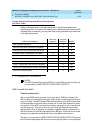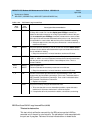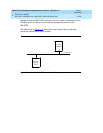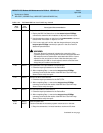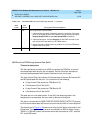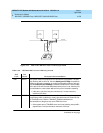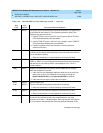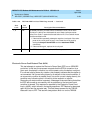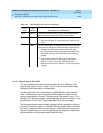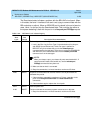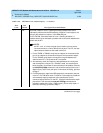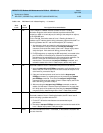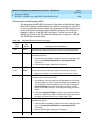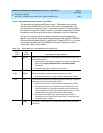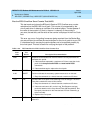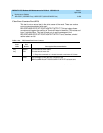
DEFINITY ECS Release 8.2 Maintenance for R8.2csi
555-233-119 Issue 1
April 2000
Maintenance Objects
3-282BRI-PORT (ISDN-BRI Port), ABRI-PORT (ASAI ISDN-BRI Port)
3
Level 1 Status Inquiry Test (#621)
This test determines the state of the transmission facility of a BRI port at the
physical layer (that is, Level 1). Level 1 can be in one of three possible states:
Activated, Pending Activation, or Deactivated.
The Activated state is the correct state for an ISDN-BRI port. In this state the
Level 1 interface can communicate with the BRI endpoint or ASAI or Lucent
adjunct administered on this port. This test passes if the state of Level 1 (L1) is
Activated. This test also passes if software has taken this port out of service. See
the description of the Level 1 "Deactivated State" below for more details.
The Pending Activation state indicates a problem with the endpoints or adjunct,
the wiring to the sets or adjunct, or the BRI-LINE circuit pack. When in this state,
the Level 1 interface is either not receiving any L1 framing from the endpoint or
adjunct (Endpoint Idle), or it is communicating with the endpoint or adjunct but
cannot transition to the Activated state (Endpoint Active).
Table 3-121. TEST #620 Electronic Power Feed Restoral
Error
Code
Test
Result Description / Recommendation
1005 ABORT This test is not valid for this port type. The TN2208 does not
have an electronic power feed, and the test will abort.
2012 ABORT Internal system error.
1. Retry the command at 1-minute intervals a maximum of 5
times.
PASS The EPF Test passed. The message to turn on the power feed
to the station or the adjunct was successfully sent to the port.
1. Although this test should not return a fail result, after
running this test, the Error Log should be checked for any
entries with error type 257 to examine the real results of
this test.
2. An error type of 257 in the Error Log indicates some
problem with the power to the station or the adjunct.
Check for a short in the wiring, a damaged jack, a
defective voice terminal or adjunct, or an incorrect type of
terminal.
Continued on next page



